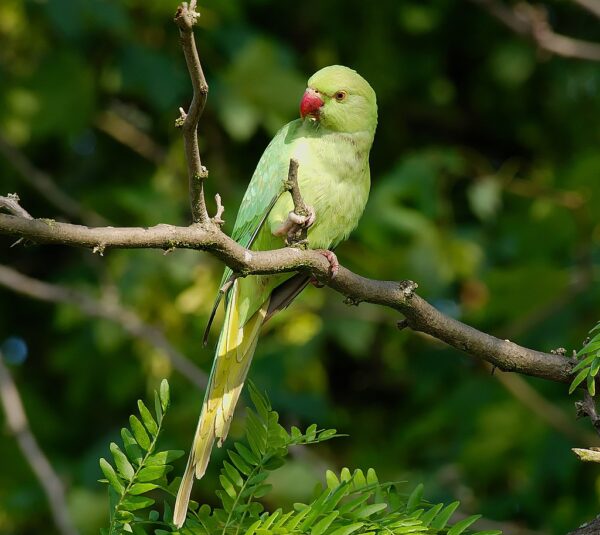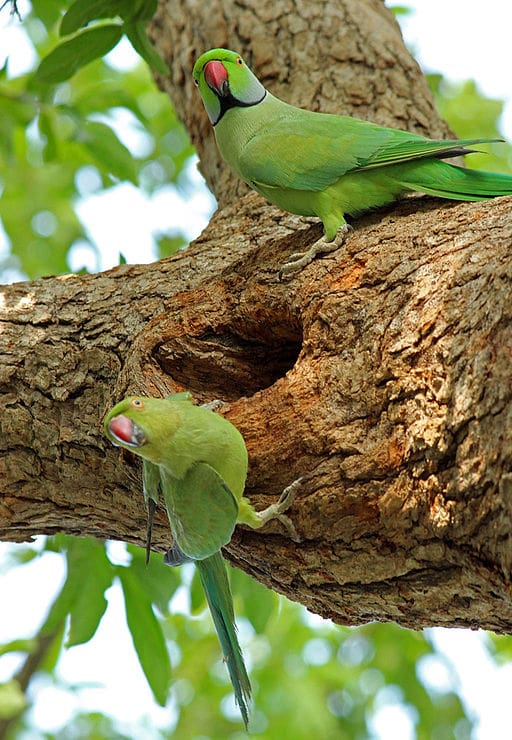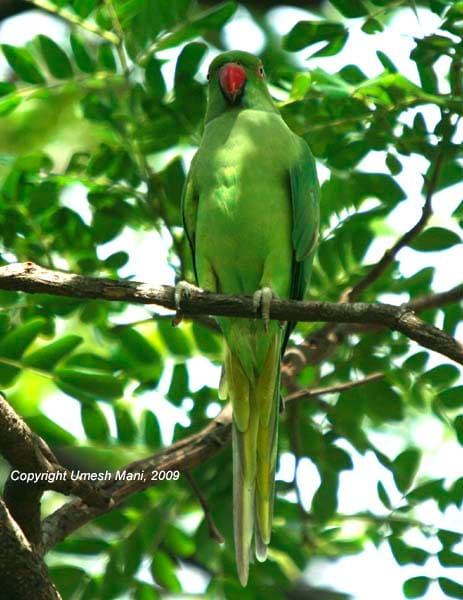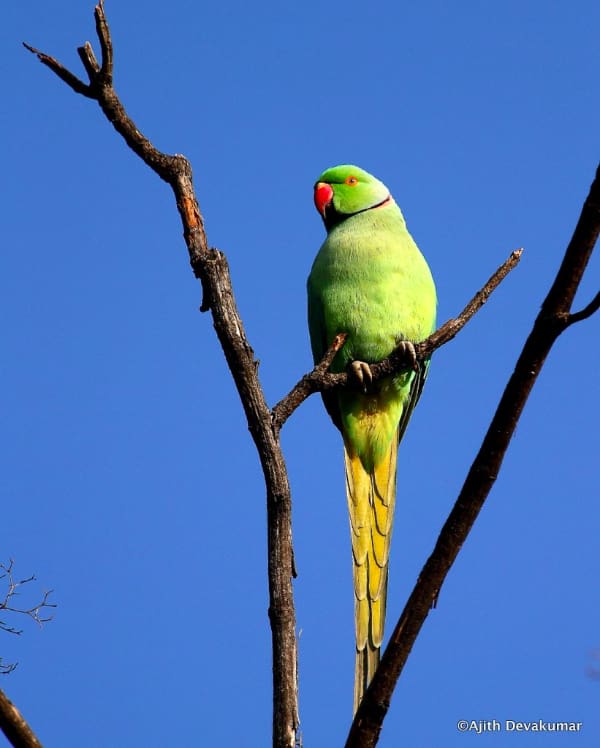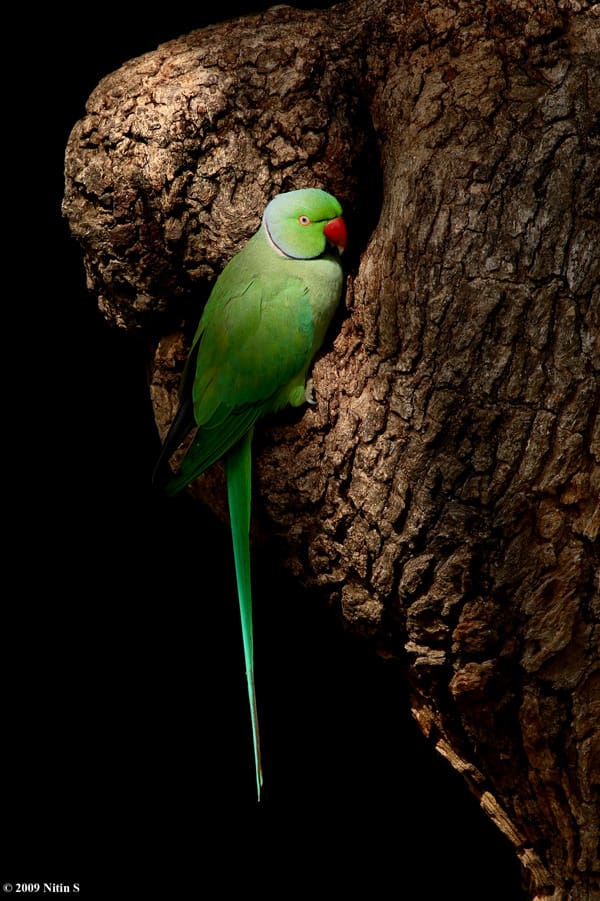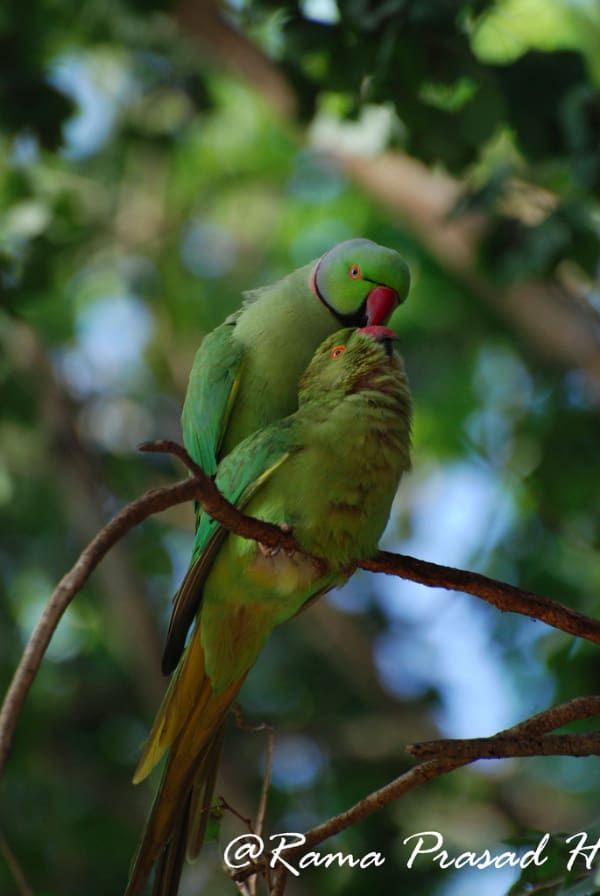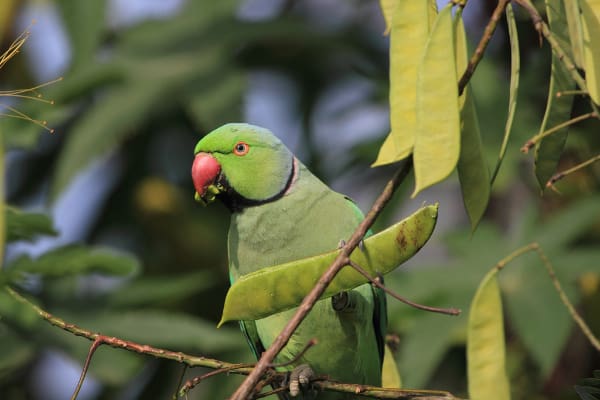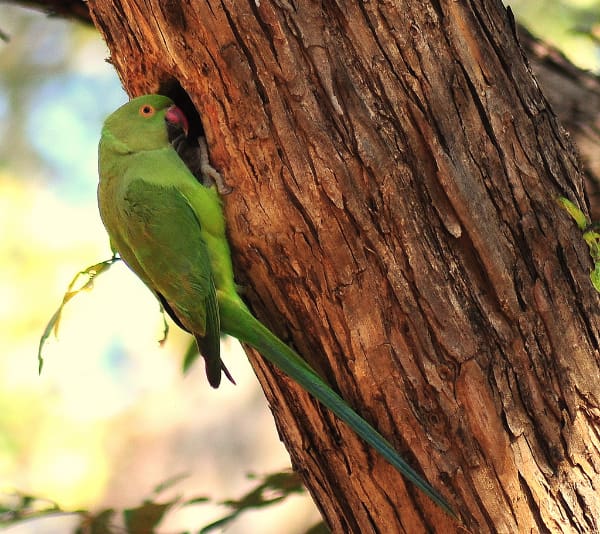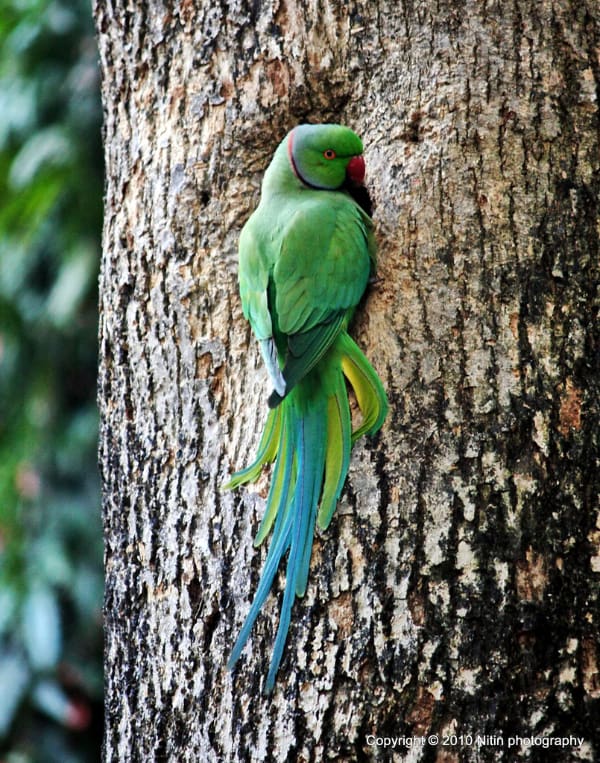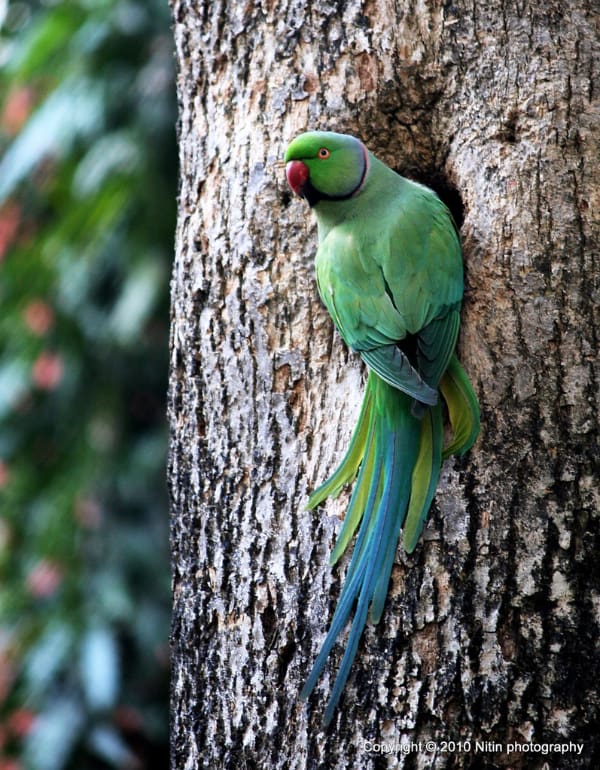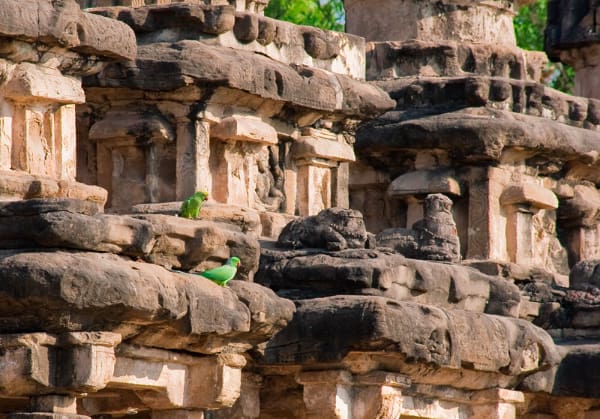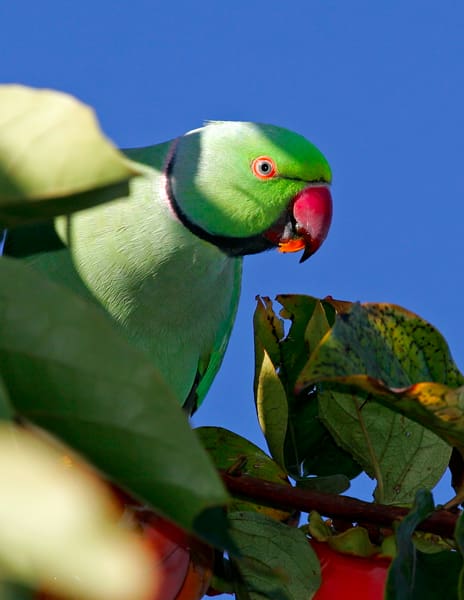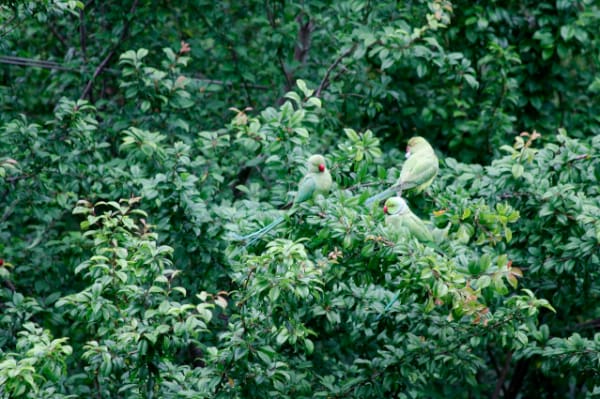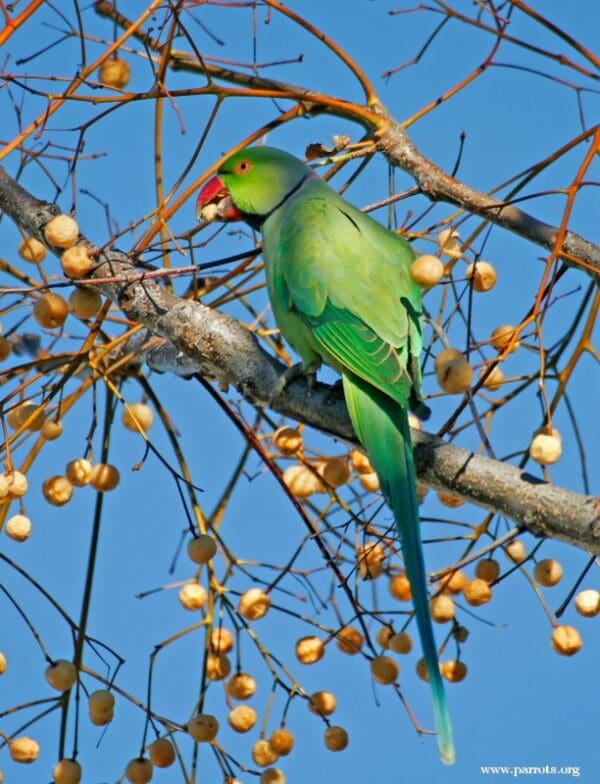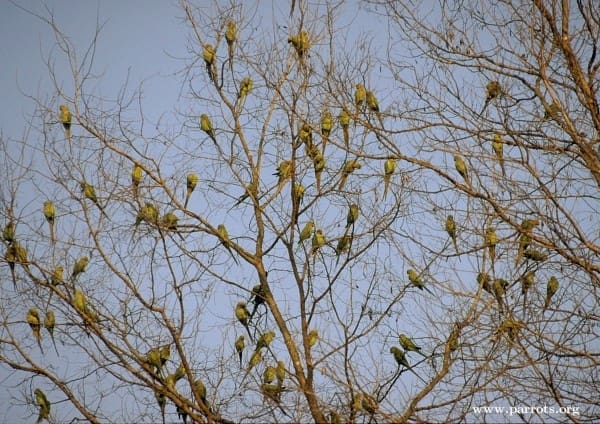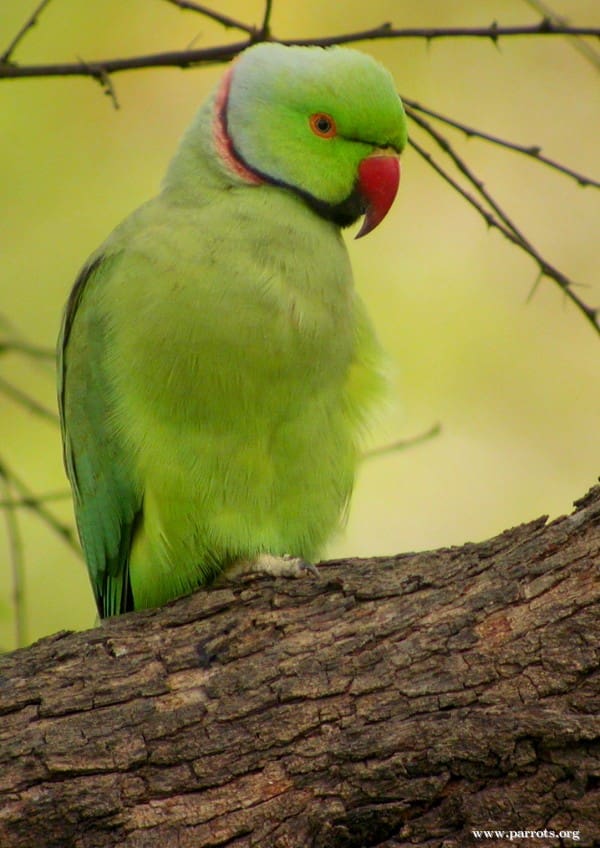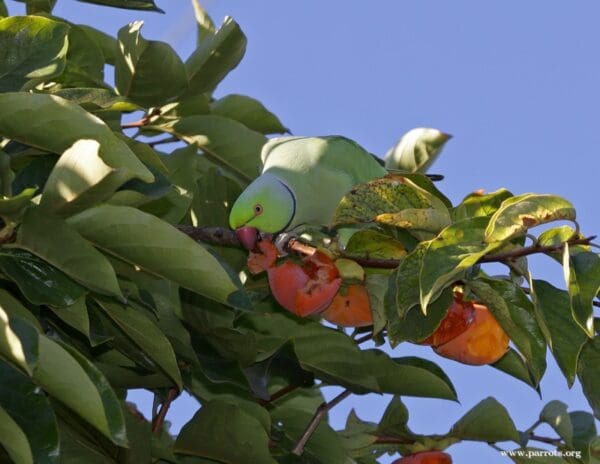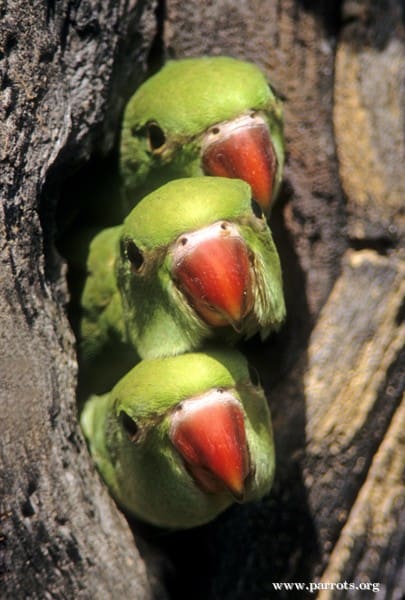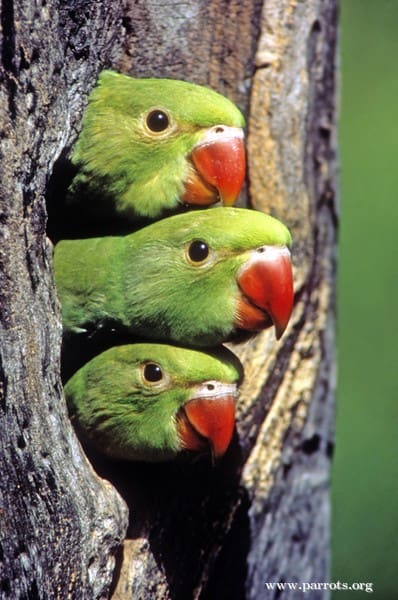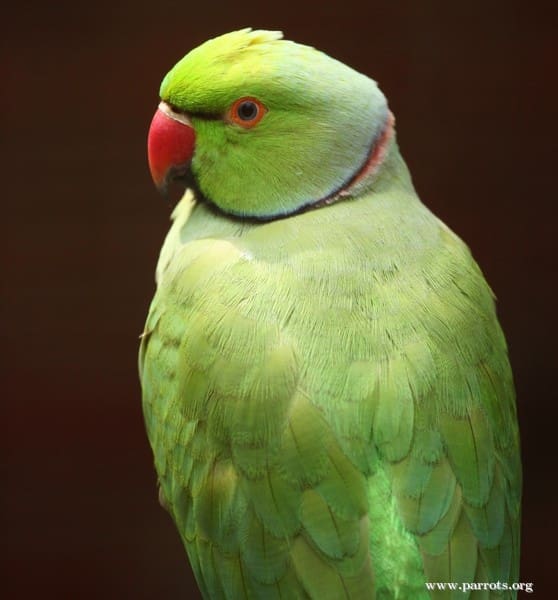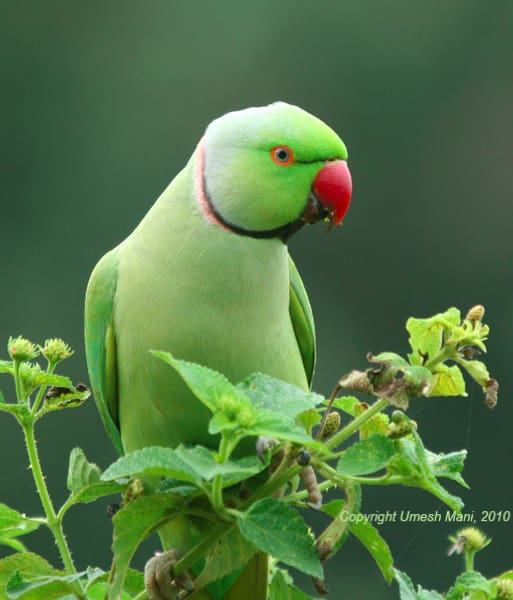Ringneck Parakeet
Also known as:
Rose-ringed Parakeet, Green Parakeet, Long-tailed Parakeet, Senegal Long-tailed Parakeet, Northern Rose-ringed Parakeet (A.k. borealis)
Also known as:
Rose-ringed Parakeet, Green Parakeet, Long-tailed Parakeet, Senegal Long-tailed Parakeet, Northern Rose-ringed Parakeet (A.k. borealis)
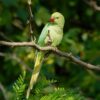
![© Karthik Easvur [CC BY-SA 3.0] via Wikimedia Commons](https://gt2024.parrots.org/wp-content/uploads/2023/01/wpt_Ringneck-Parakeet_1104-48-100x100.jpg)
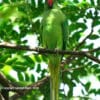
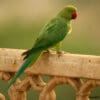
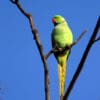
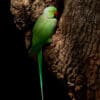
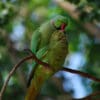
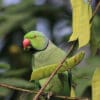
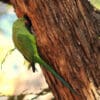

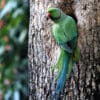

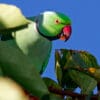
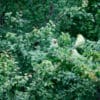
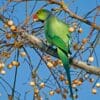
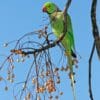
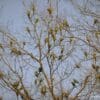
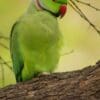
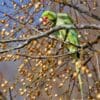
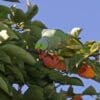
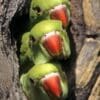
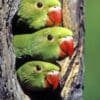
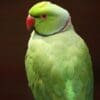
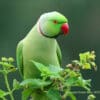
DID YOU KNOW?
The Indian and African Ringnecks have the widest distribution of any parrot species.

Alexandrinus

krameri
Size:
40 cm (15.6 in)
Weight:
116-140 g (4.1-5 oz)
Subspecies including nominate:
four: A.k. krameri, A.k. parvirostris, A.k. borealis, A.k. manillensis (which has numerous colour mutations)
Colour Adult:
A.k. krameri: Male-in general green/yellow, black chin and wide black stripe across lower cheeks; pink collar around hindneck; nape of neck washed with blue; upper mandible dark red tipped with black, lower mandible black with dark red at base; thighs green. Eye yellow. Female-no head markings; faint yellow/green collar; shorter tail.
A.k. parvirostris: As in krameri but head and cheeks greener, less yellow; smaller beak with brighter red upper mandible.
A.k. borealis: Plumage green without yellow; male, sides of head behind ears blue suffusion; all-red larger beak; larger in size.
A.k. manillensis: Similar to borealis but lower mandible black; male, facial marks and pink collar more noticeable.
Colour Juvenile:
A.k krameri: As in female but beak paler. Eye grey coloured.
A.k. borealis: As in adult.
A.k. manillensis: As in adult.
Call:
Very vocal, noisy, especially at communal roosts. Wide variety of shrieks, whistles and other sounds. Calls often delivered in bursts of 3-6 followed by a pause and are shrill or harsh, or soft and more musical. Birds call while in flight.
More Information:
Content Sources:
CITES
BirdLife International
Cornell Lab of Ornithology/Birds of the World
Parrots: A Guide to Parrots of the World, Juniper and Parr, 1998
Parrots of the World, Forshaw and Cooper, 1977. 2010 edition
Parrots of the World, Forshaw, 2006.
Parrots in Aviculture, Low, 1992.
Parrots: Their Care and Breeding, Low, 1986.
Captive Status:
Widespread in captivity.
Longevity:
25-30 yrs
Housing:
Walk-in aviary, minimum length 4.5 m (14.7 ft).
Diet:
Small seed mixture such as: canary, millet, small amounts of oats, buckwheat, safflower, sunflower; spray millet, green leaves, seeding grasses; variety of fruits such as: apple, orange, banana if accepted; complete kibble.
Enrichment:
Provide bird-safe chewable wood and heat sterlized pine cones, vegetable tanned leather toys, foot toys; climbing ropes, ladders, swings, push and pull toys. Also provide overhead misters or shallow water bowls for bathing.
Nest Box Size:
Vertical box, 12″ x 12″ x 18″ (30.5 cm x 30.5 cm x 45.7 cm).
Clutch Size:
4 to 6
Fledging Age:
7 weeks
Hatch Weight:
—
Peak Weight:
—
Weaning Weight:
—
World Population:
Unknown, increasing.
IUCN Red List Status:
Least Concern
CITES Listing:
Not categorised
Threat Summary:
Has increased in numbers due to expansion of agriculture. Threat from trapping, however, is increasing.
Range:
A.k. krameri: Occurs in NC Africa from southern Mauritania east to S Sudan and N Uganda.
A.k. parvirostris: Sennar district, E Sudan through Eritrea and N Ethiopia to Djibouti and occasionally N Somalia.
A.k. borealis: N Pakistan and N India, and Nepal east to C Burma.
A.k. manillensis: Sri Lanka, Rameswaram Island, and mainland India.
Habitat:
Found in wide range of woodland types from secondary tropical forest, riparian woodland, mangroves, savanna, open farmland with scattered trees and parks and gardens in urban areas. Occurs up to 2000m (6560 ft) (Africa).
Wild Diet:
Eats cereal grasses, weed and tree seeds, fruit, nuts, flowers and nectar; cultivated citrus fruits, sunflower and maize.
Ecology and Behaviour:
Highly adaptable species; roosts communally, often with other species such as crows, mynas or other parrots. Very social especially outside of breeding season. Non-territorial, forming flocks of several thousand birds at a time.
Clutch and Egg Size:
4 to 6 broad oval eggs, 30.5 x 24.0 mm (1.2 x 0.9 in).
Breeding Season:
Breeds in January-April, sometimes July. Nests in existing cavity, usually enlarged by the birds themselves. Some will nest in a loose colony in rock faces.
Related Links:
—
